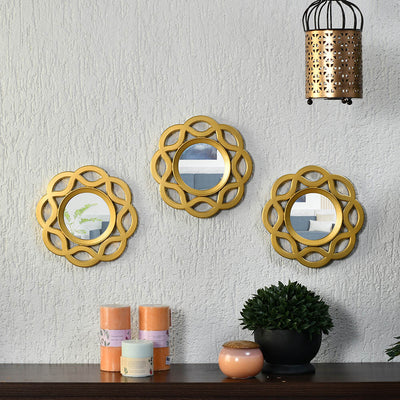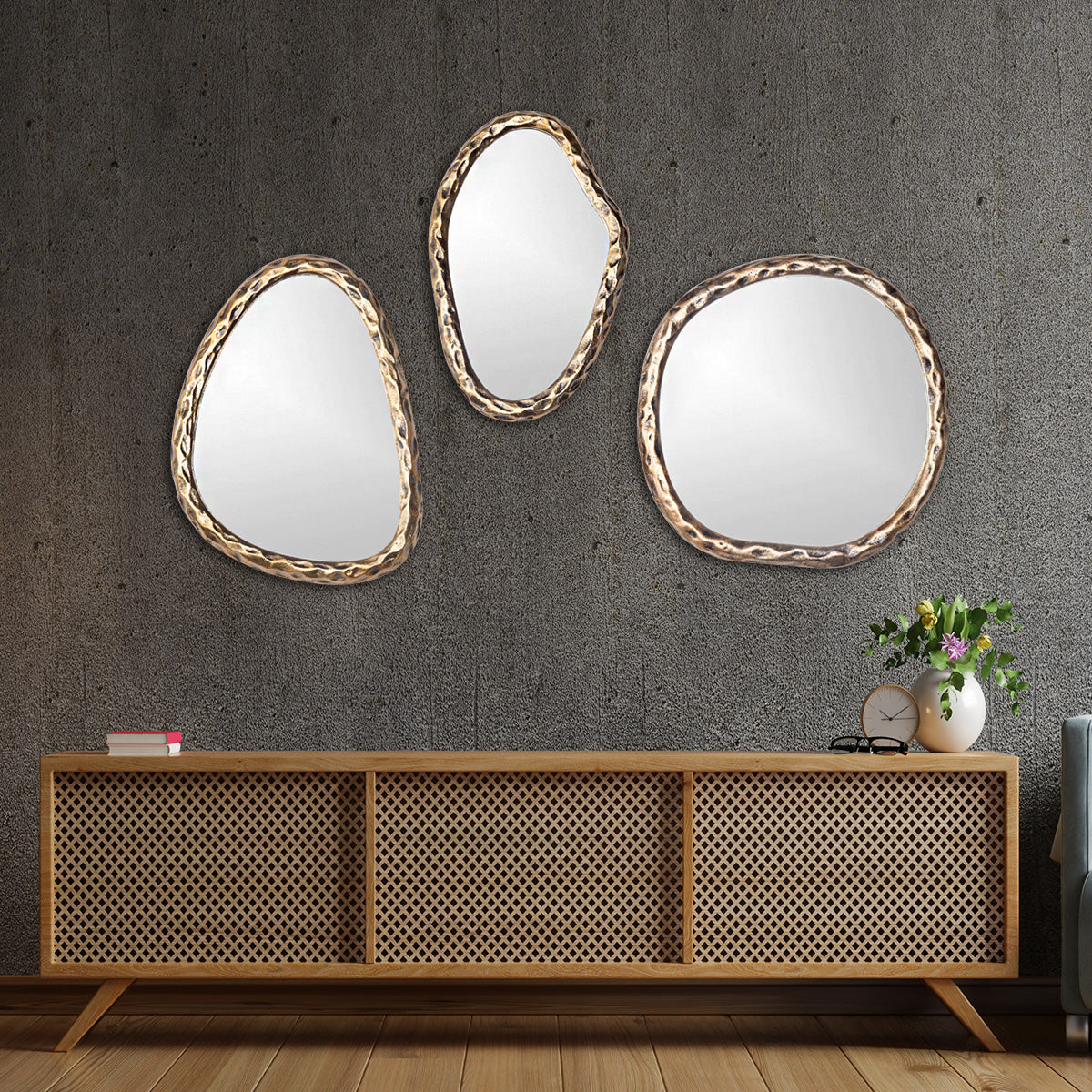Decorative mirrors are not just functional; they’re an essential element of home decor that can dramatically alter the appearance and feel of a room. As a passionate interior enthusiast, I’ve spent years experimenting with various styles and placements of mirrors in my own home. This guide will dive into the world of decorative mirrors, exploring their styles, benefits, and tips for choosing and placing them for maximum impact.
What Are Decorative Mirrors?
Decorative mirrors are artistic pieces that serve both practical and aesthetic purposes. Unlike regular functional mirrors, decorative mirrors are designed to complement the decor style of your space while providing the essential function of reflection. They come in a myriad of shapes, sizes, and styles, making them a versatile addition to any room.
Types of Decorative Mirrors
- Framed Mirrors
- Wall Mirrors
- Accent Mirrors
- Over-the-Mantel Mirrors
- Vanity Mirrors
- Floor Mirrors

Benefits of Decorative Mirrors
Integrating decorative mirrors into your home decor offers several benefits:
- Space Enhancement: Mirrors can make small spaces appear larger.
- Light Reflection: They amplify natural light, creating a brighter atmosphere.
- Focus Points: A well-placed mirror can serve as a focal point in any room.
- Aesthetic Appeal: Decorative mirrors contribute to your overall decor style.

Choosing the Right Decorative Mirror
When selecting a decorative mirror, consider the style, size, shape, and placement. Here’s a detailed breakdown of factors to help you decide.

1. Consider Your Space and Style
Your decorative mirror should resonate with your existing decor. Here are some common styles:

- Modern: Sleek, minimalistic frames with clean lines.
- Rustic: Natural woods or distressed frames.
- Vintage: Intricate detailing, often with antique finishes.
- Industrial: Metal frames that add an urban feel.
2. Size Matters

The size of your decorative mirror should complement the dimensions of the room. Here’s a quick guide:
| Room Size | Recommended Mirror Size |
|---|---|
| Small Room | 24” to 30” |
| Medium Room | 30” to 48” |
| Large Room | 48” and above |

3. Shape and Design
Mirrors come in various shapes:
- Round: Softens the look of angular furniture.
- Rectangular: Versatile and classic, fits almost anywhere.
- Abstract: Adds unique character to your decor.
4. Reflective Quality
Not all mirrors are created equal. Consider the reflective quality:
- Standard Mirrors: Good for everyday use.
- High-Quality Mirrors: Offer a clearer, more detailed reflection.
How to Use Decorative Mirrors in Home Decor
Placement of your decorative mirrors can significantly influence your space’s ambiance.
1. Entryways
Placing a mirror in the entryway provides a final check before heading out and creates the illusion of a larger space.
2. Living Rooms
Mirrors can enhance light and make your living space feel more open. Consider placing one above a sofa or a fireplace.
Placement Tips:
- Hang mirrors at eye level.
- Position mirrors opposite windows to maximize light reflection.
3. Bedrooms
In bedrooms, a decorative mirror can provide functionality as well as style. A full-length mirror is perfect for outfits and adds an elegant touch.
4. Dining Areas
Mirrors in dining areas can create a more intimate atmosphere by reflecting candlelight during dinner parties.
Decorative Mirrors Maintenance and Care
To keep your mirrors looking their best, proper care is essential. Here are a few maintenance tips:
1. Regular Cleaning
Use a glass cleaner and a soft cloth to keep mirrors free of dust and smudges. Avoid abrasive materials that can scratch the surface.
2. Check for Damage
Regularly inspect the frame for any signs of wear, especially if it’s made of natural materials that can warp or rot.
Pros and Cons of Decorative Mirrors
While decorative mirrors can enhance a space, they also come with some considerations.
| Pros | Cons |
|---|---|
| Adds light and depth to a space | Can break or shatter |
| Variety of styles available | Requires regular cleaning |
| Versatile usage in different rooms | Can be heavy and hard to hang |
Personal Experience: My Journey with Decorative Mirrors
When I moved into my first apartment, my walls felt bare and lifeless. After researching decorative mirrors, I decided to invest in a large, round mirror with a gold frame. This single piece transformed my living room completely. It reflected the natural light streaming in from the windows, making the space feel more inviting. Not only did it serve a functional purpose, but it also became a conversation starter among my friends.
Frequently Asked Questions (FAQs)
Do decorative mirrors serve a functional purpose?
Yes, decorative mirrors serve the functional purpose of reflection while also enhancing the aesthetic appeal of your space.
What styles of decorative mirrors are popular?
Popular styles include modern, rustic, vintage, and industrial, each adding a unique touch to your decor.
How can I make my small room look larger with mirrors?
Using a large mirror strategically placed opposite a window can reflect light and create an illusion of more space.
Are there any specific mirror shapes that work best in certain rooms?
Round mirrors are great for softening angular furniture, while rectangular mirrors can provide a classic look in any setting.
Conclusion
Decorative mirrors are an exciting and transformative element of interior design. From enhancing light to adding a decorative flair, they can truly elevate your home. I encourage you to explore different styles, shapes, and placements to find the perfect mirrors for your space. With a little creativity and consideration, you can harness the power of decorative mirrors to create a warm and inviting atmosphere in your home.